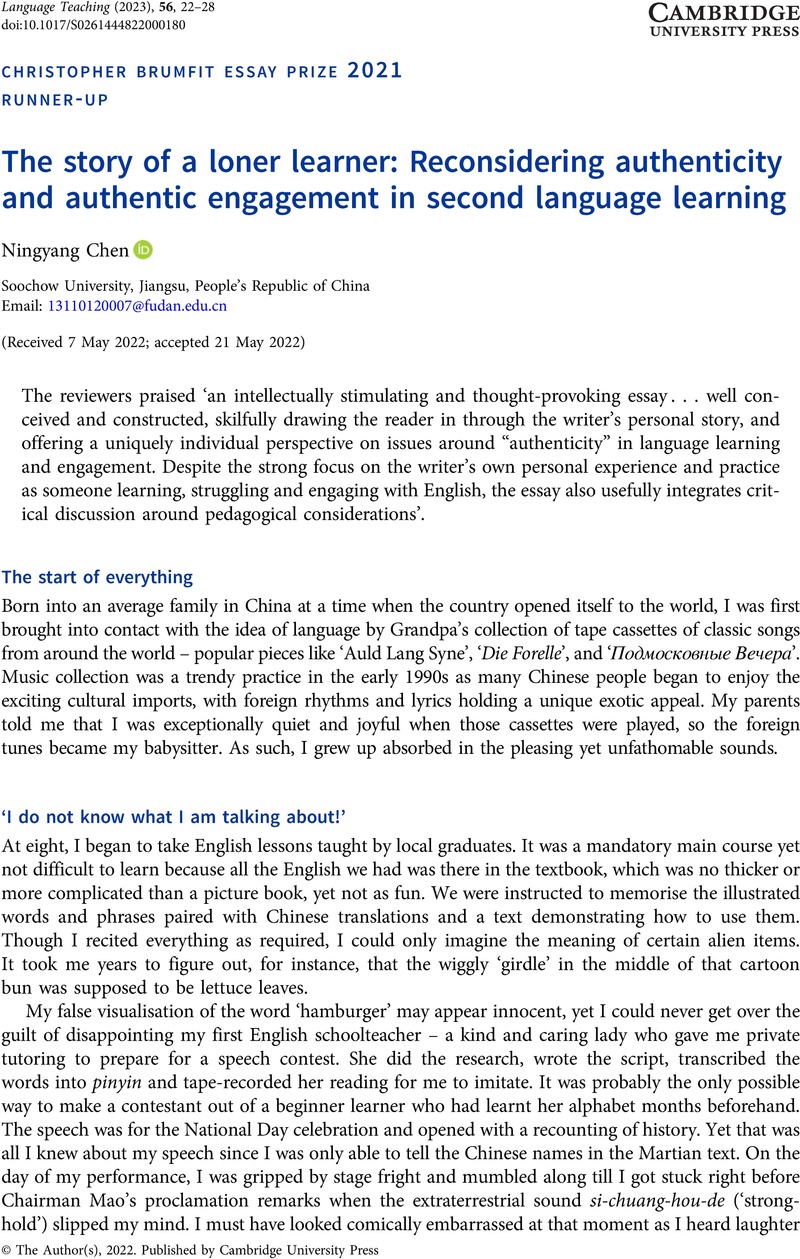Crossref Citations
This article has been cited by the following publications. This list is generated based on data provided by Crossref.
Chen, Ningyang
2023.
Language, research, and publication.
Journal of English for Research Publication Purposes,
Vol. 4,
Issue. 2,
p.
140.
Ramezanzadeh, Akram
2023.
University language teachers’ performance of authenticity through Durchsichtig and Handeln: an experience of coming out through the third space of hybridity.
Language and Intercultural Communication,
p.
1.






